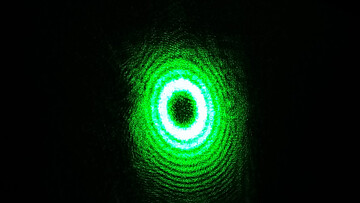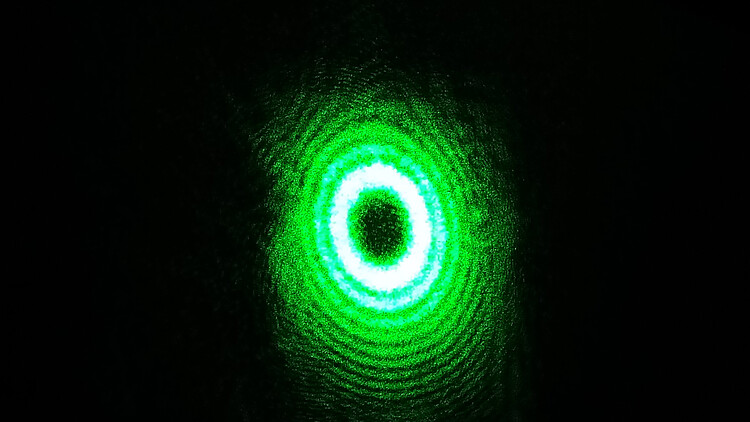Chirality and Twisted Light
Chirality is an important property of elementary particles, molecules and solids. It plays an important role in the life sciences and the physics of elementary particles and special semiconductors. It is based on the difference between the arrangement of an object and its mirror image (inversion). Chirality is thus similar to the difference between the right and left hand, also called handedness.
Twisted light is about the fact that light can also have an angular momentum component in addition to handedness, which can be transferred to atoms and molecules. On the one hand, light propagates in a straight line, but it can also rotate around its own axis ("twisting"). This angular momentum can be detected through interaction with matter. In the Cluster of Excellence QuantumFrontiers, this property is the focus of a Topical Group that investigates the interaction of twisted light with trapped ions, for example, and also with complex chiral systems.
An experimental approach to the effect
The publication from the Institute of Condensed Matter Physics at TU Braunschweig together with Inorganic Chemistry from Mainz addresses the question of whether the phase of twisted light can couple to chiral molecules or solids. "Intensive theoretical investigations have opened up many arguments for or against such coupling. However, initial experiments could confirm neither one nor the other," says Peter Lemmens, Professor at TU Braunschweig.
"We finally chose a different approach. Under the premise that this coupling exists, we set the parameters of the experiment in such a way that the effect would have to be maximally significant. Then, when the effect actually occurred, we followed up with systematic and elaborate investigations to understand it. In the process, we were able to prove that you can change the chirality of a system with light and that the handedness can be distinguished from the phase of the light."
New possibilities for the application of twisted light
Twisted light is being explored with a view to a wide range of applications, such as high-resolution microscopy, more precise frequency metrology, optical clocks, quantum information transfer and the search for dark matter in space. The team's success in coupling with chiral systems opens up avenues to design new optically and chirally active instruments and materials.
Original publication:
Silvia Müllner, Florian Büscher, Angela Möller, and Peter Lemmens
Discrimination of Chiral and Helical Contributions to Raman Scattering of Liquid Crystals Using Vortex Beams
Physical Review Letters 129, 207801 (2022)
DOI: https://doi.org/10.1103/PhysRevLett.129.207801









